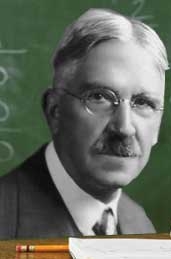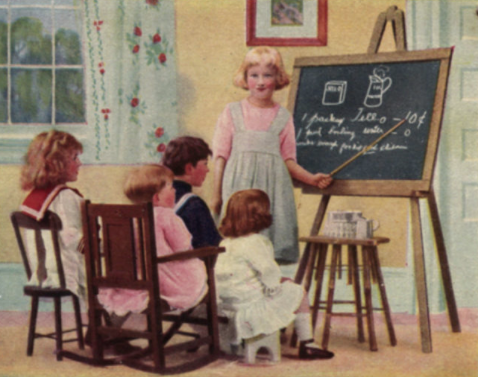
Get your children OUT of the System – NOW
Currently, more people seem to be waking up to the state of educational institutions. Complaints of indoctrination in schools by both parents and teachers have increased in public debate in recent years, with various discussions relating to topics such as critical race theory and gender ideology.
In addition to political indoctrination, issues such as the drop in reading and math proficiency and policies of prolonged school closures during covid lockdowns have also contributed to this dissatisfaction. As alternatives, more states have passed policies that allow school choice in 2023, and the numbers of children educated through homeschooling grew by more than 60 percent between 2020 and 2022…
However, today’s appalling educational scenario is not unfathomable for libertarians, especially for economist and libertarian theorist Murray Rothbard. In his books For a New Liberty and Education: Free and Compulsory, the author shows the true role of public education throughout history and how it has diverged from its stated objectives. These books, together with other concepts from libertarian theory and the Austrian School of Economics, can be applied today to guarantee true educational freedom, as the topics will discuss below.
~ The History Behind Public Education ~
Throughout his work, Rothbard has shown how compulsory public education has always been used as a way of repressing dissident minorities, be they political, ethnic, or religious. Religious leaders of the Protestant Reformation, such as Martin Luther and John Calvin, saw mandatory state education as a weapon of religious warfare against religions that did not follow their doctrines.
Besides religious indoctrination, government-sponsored schooling was often used as a tool to create an obedient populace to the ruling state. As pointed out by Rothbard, for the first advocates of state-sponsored education in America, such as Calvin Stowe, public schooling was supposed to be seen as a national security matter, and parents who did not enroll their children in such a system needed to be considered a threat to the public in a similar way to international spies or invaders.
The connection between indoctrination for war and public education models can also be found in the Prussian school system and its consequences for Germany’s participation in the First World War. Established during the early nineteenth century by then king Frederick William III and his minister of education Karl vom Stein, the Prussian education system was a centralized educational complex of mandatory attendance with military inspirations aimed at national unity. The militarism and strict discipline of the education system sought to build a national identity in which the public school was an army formed by the people, a perspective that helped to shape the bellicose desires during the First World War period.
~ From the History of Public Education in the Past to the Current Progressive Religion ~
The examples given by Rothbard show how, historically, education has been used as a tool to control what children and young people learn, according to the ideologies that the state wanted to favor. If, in the past, the ideologies were religious or about building a national identity at the expense of the suppression of other dissident cultures/nationalities that coexisted in the same state, today a new type of progressive religion is being taught in schools.

John Dewey
In October 2022, a survey by the Manhattan Institute showed how social justice theories are being exposed in American schools as absolute truths. From the survey commissioned by the article’s authors, Eric Kaufmann and Zachary Goldberg, 80 percent of students surveyed were taught at least one critical race theory concept in a high school classroom, and 54 percent were at least taught a concept belonging to gender ideology. Besides that, only 32 percent of students reported that opposing concepts were taught as being equally respectable, which indicate indoctrination rather than a mere exposition of different views about controversial topics.
This development makes sense and could be cited as a direct consequence of the ideas proponents of public education used to have. Since its inception with thinkers such as John Dewey, left-wing ideology has been viewed as admirable, and even soviet-style education was praised. Moreover, given that education has historically served as a tool of the ruling elites, and progressives are now the new ruling elite, the logical conclusion is that progressivism is being taught in both public and heavily state-regulated private schools.
~ Bad Economic Incentives and a Natural Rights Violation ~
In addition to the less than positive history of public education as an indoctrination project from the very beginning, it’s also important to mention the theoretical contradictions and perverse incentives of a centralized-state education from an Austro-libertarian framework. Firstly, by having to educate a large number of pupils and not knowing what kind of education each of them wants, government schooling is unable to take into account the different scales of value that each family and student has when it comes to education.
Without market signals and private ownership of the means of production in the state system, it is not possible to make the most appropriate business decisions regarding what is valued by the general public and to economize scarce resources in the most profitable way. Therefore, as in most socialist experiments, there is the problem of economic calculation applied to education when it is in the hands of state agents.
 According to libertarian theory, natural rights are constantly violated with the establishment of public schools that are supposedly free for the population in general. Firstly, since taxation is a coercive taking by the state of resources derived from the productive labor of individuals, and since state schools are financed through taxes (through direct taxation or via inflation), it is not possible to claim that they are institutions that have been established voluntarily.
According to libertarian theory, natural rights are constantly violated with the establishment of public schools that are supposedly free for the population in general. Firstly, since taxation is a coercive taking by the state of resources derived from the productive labor of individuals, and since state schools are financed through taxes (through direct taxation or via inflation), it is not possible to claim that they are institutions that have been established voluntarily.
In the current situation, people such as childless young adults, the elderly, and parents who pay for private educational establishments for their children are forced to pay for a system they don’t use. What’s more, they may also be funding the spread of ideologies they don’t agree with. With that, it is possible to see how education violates both property and human rights.
~ What Must Be Done ~
With all the considerations about how state education is a bad idea in historical, ideological, economic, and natural rights grounds, many people have asked themselves about possible solutions to guarantee more educational freedom. Two such solutions can be described between the dichotomy of reform and abolition, present in so many current libertarian debates.
Economist Milton Friedman promoted educational vouchers to reduce the bureaucracy of a state-controlled education system. According to this policy, called “school choice” by its advocates, public funding for education would still exist, but instead of the resources paying for all the school structure/bureaucracy, the money would be deposited for each student who could use it in private schools.
Despite being a very popular measure among conservatives and libertarians, the use of vouchers also has problems, which Rothbard pointed out. First, the infringement on property rights would still be present under a voucher system since government funding (through coercive taxation) would not be abolished but just transferred from public to private schools.
Moreover, even with parents being able to decide where their children go to school, government agents would have to determine which schools would be considered for the program and which ones would not. These decisions might bring incentives to increased governmental oversight and regulation of private educational institutions, given that the voucher system would bring more public funds to the private system and could also raise tuition prices in private education.
The other proposition, on the other hand, offers alternatives that aim for the complete abolition of any interference in education. Just as there was a separation of religion and state in the past to prevent state interference in the way individuals practiced their religion, a complete separation of education and state is needed.

The abolition must occur in all levels, from kindergarten through twelfth grade schools to universities, so that the intellectual formation of individuals is not subject to the ideological interests of the ruling class. To this end, it is necessary to call for a major reduction in the regulations imposed on private educational institutions, a complete privatization of public institutions, and an end to any existing subsidies for the educational system, as advocated by Rothbard.
Concrete examples of measures to take include maximum decentralization of the school system, with decisions being made at the local level, incentives for alternatives to traditional formal education, with an increasing rejection of the current system by more families (which is already happening, given the growth in the number of students in homeschooling initiatives) and with the creation of new private institutions with different approaches to education, giving students more choice. After understanding the problems of our education, the libertarian should not just aim for small reforms but fight to dismantle the current system entirely.
Written by Marina Rocha for the Mises Institute ~ March 19, 2024
